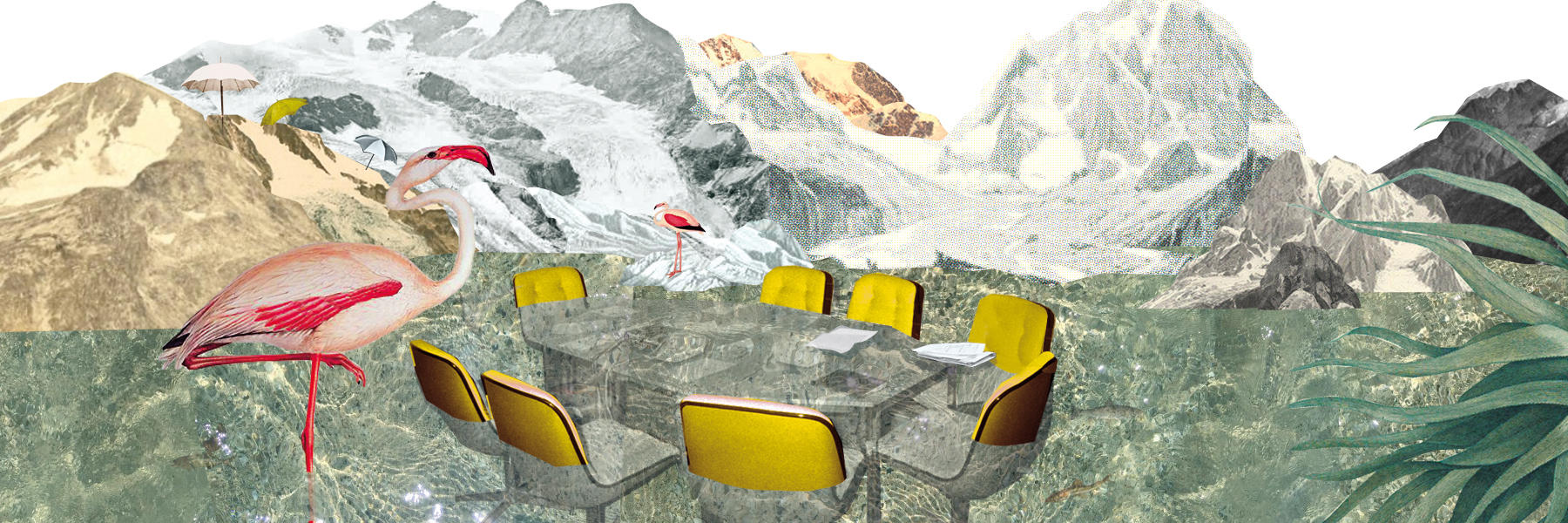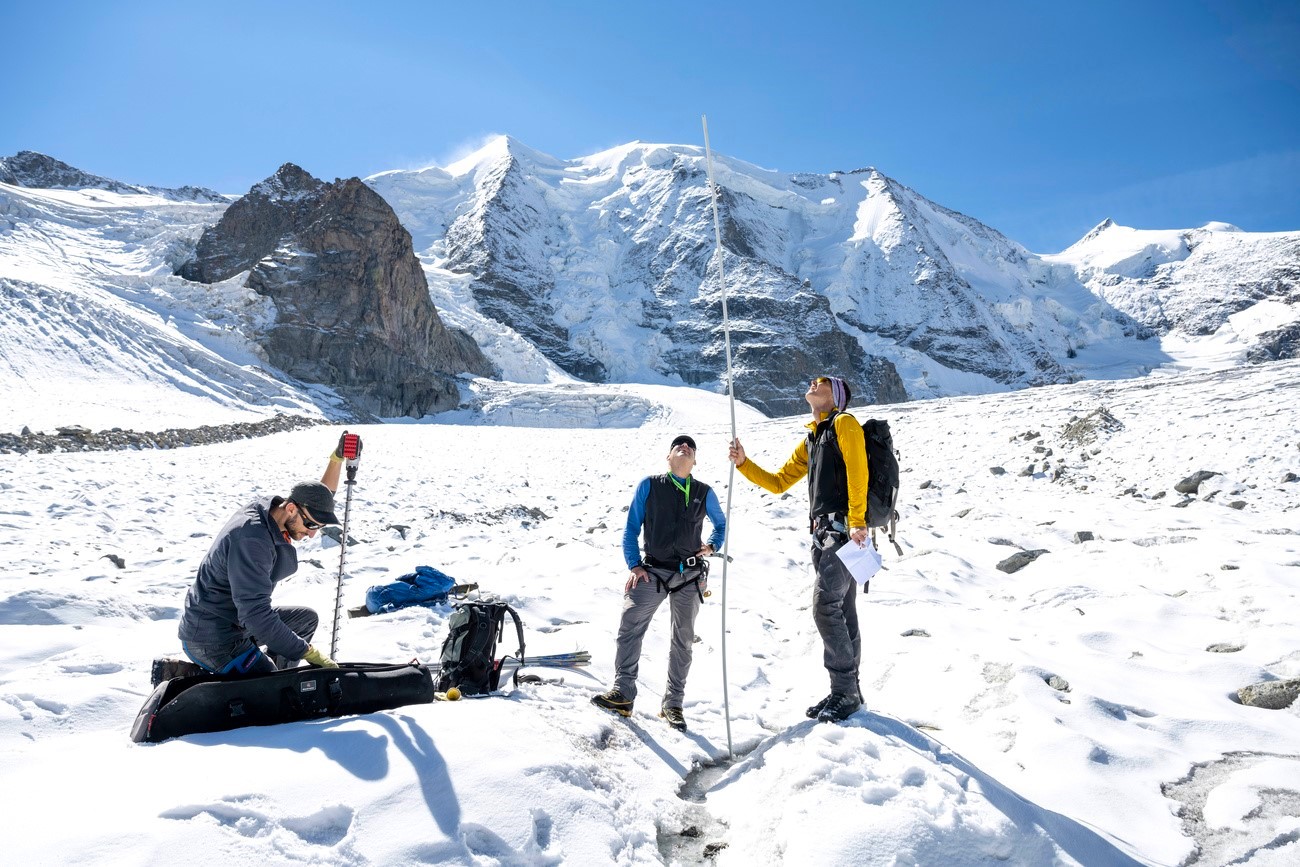
Alpine glaciers are melting even on the highest peaks

Swiss glaciers have lost a quarter of their volume over the past decade. Increasing heatwaves and decreasing snowfall in the mountains could lead to the disappearance of almost all glaciers in the Alps by the end of the century.
Climate change is giving Swiss glaciers no respite. In 2025 their volume shrank by 3% compared to the previous year, according to the latest assessment by the Swiss Glacier Monitoring Network (GLAMOS) and the Swiss Academy of Natural Sciences. This is the largest retreat after those in 2003, 2022 and 2023.
“This year turned out to be a little less extreme than we feared,” Matthias Huss, director of GLAMOS, tells Swissinfo. “However, what strikes me and worries me is that we’re getting used to these very negative years. It’s a new normal, but one that shouldn’t be there.”
The Alps are warming faster than the global average and Swiss glaciers have lost a quarter of their volume since 2015, GLAMOS points out. Between 2016 and 2022, 100 glaciers – out of a total of about 1,400 – disappeared completely in Switzerland.
Temperatures above 0°C even at an altitude of 5,000 metres
The melting this year was helped by the scarcity of snow during last winter. The snow layer that usually protects the glaciers from the summer heat was insufficient. In some regions of Graubünden in eastern Switzerland, fresh snow levels were among the lowest ever observed, GLAMOS says.
Heatwaves in June – the second-warmest since measurements began in 1864 – and August also contributed to glacier shrinkage. “In June, I was on the same glacier several times: it’s incredible to observe that the thickness can shrink by a metre in just over a week,” Huss says.
What is your opinion? Join the debate:
The glaciers most affected are those below an altitude of 3,000 metres. The thickness of the Plaine Morte glaciers in the Bernese Alps and the Silvretta glacier in Graubünden has decreased by over two metres since 2024. The melting of the ice on the Aletsch, the largest glacier in the Alps, has exceeded four metres in some areas.
However, not even the highest glaciers are spared. This summer, the zero degree line has exceeded 5,000 metres several times. “This is a new phenomenon, which we have observed only in recent years. The melting of the glaciers also affects the highest peaks,” Huss says, adding that only a relatively cool and wet July made it possible to “avoid the worst”.

Glaciers retreat in all Alpine countries
Glacier retreat is not limited to Switzerland. “All glaciers in the Alps share the same fate: a frontal retreat and a reduction in area and thickness, even on the north-facing slopes,” Vanda Bonardo, head of the Glacier CaravanExternal link, tells Swissinfo.
The aim of this travelling campaign, which originated in Italy, is to monitor Alpine glaciers and raise awareness of the impacts of climate change. The Caravan visited eight glaciers in Italy, Switzerland and Germany this summer.
Compare your views:
The evolution of the Adamello glacier in Lombardy, Italy’s largest, is particularly significant, according to Bonardo. “Compared to the visit two years ago, it has completely changed: the front has broken and the length has decreased by several hundred metres”.
Over the past 60 years, the Italian Alps have lost an area of ice of more than 170km2, equal to the surface area of Lake Como, says the Glacier Caravan in its latest report.
Due to global warming, the fate of the 93 glaciers in Austria also appears sealed. “In 40 to 45 years, the whole of Austria will be practically ice-free,” said Andreas Kellerer-Pirklbauer, head of the National Glacier Survey, last year.
The Mer de Glace, the largest glacier in France, located above Chamonix, has been retreating by an average of 30 metres a year since 2003. If global temperatures continue to rise according to current trajectories, the glacier volume will shrink by 80% by 2100, predicts the Université Grenoble Alpes.
In Germany, the greatest concern is for permafrost, the permanently frozen layer of ground. It could disappear completely within 50 years, increasing the instability of mountain slopes.

More
Why melting glaciers affect us all
More unstable mountains without glaciers
The retreat of glaciers not only profoundly transforms the Alpine landscape, with consequences for tourism, but it also affects the hydropower sector. Adaptation measures will be necessary, as the flow of water filling reservoirs in the mountains will increasingly depend on direct precipitation and snowmelt, rather than on glacier melt.
What worries experts is not only the decrease in ice quantity, but also the risks this entails. “The continuous diminishing of glaciers destabilises the mountains, which can lead to events such as the collapse of rock faces and ice masses. This is what caused the destruction of the village of Blatten,” Huss says.
>> Last May the collapse of the Birch glacier buried a large part of Blatten, Valais:

More
Flood risk threatens Swiss valley after ‘millennium event’ glacier collapse
Blatten, a model for natural hazard management
Blatten is not only an emblem of the disastrous effects that melting glaciers and permafrost in the Alps can have. For Vanda Bonardo, it is also a model for natural hazard management. It is proof that research and monitoring help reduce risk, she says.
In Blatten, technologies for observing natural hazards, for example cameras and radar equipment, enabled the authorities to get the population to safety before the glacier collapsed.
The Glacier Caravan and other organisations, including Pro Natura in Switzerland, are calling for improved glacier monitoring in Europe and the development of governance for the management of the Alpine environment.
However, to preserve glaciers, there is only one recipe, says Bonardo: “We have to reduce greenhouse gas emissions. Everything else is a palliative.”

More
Why the Swiss are leading efforts to track melting glaciers
Edited by Balz Rigendinger. Translated from Italian by DeepL/ts

In compliance with the JTI standards
More: SWI swissinfo.ch certified by the Journalism Trust Initiative































You can find an overview of ongoing debates with our journalists here . Please join us!
If you want to start a conversation about a topic raised in this article or want to report factual errors, email us at english@swissinfo.ch.